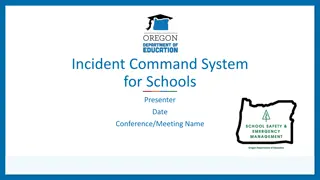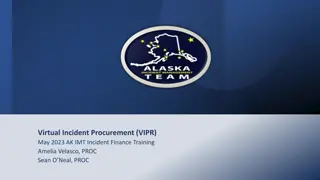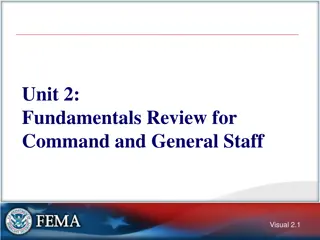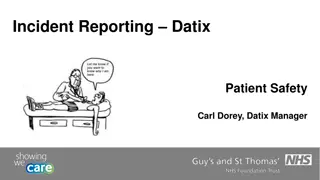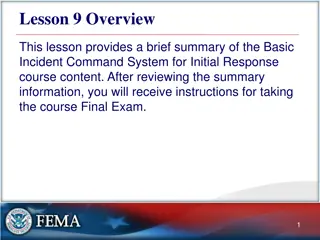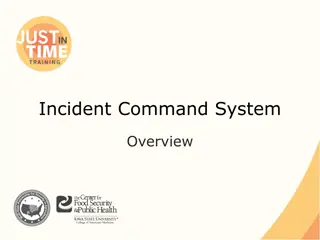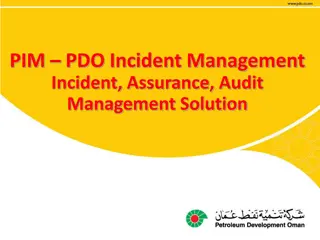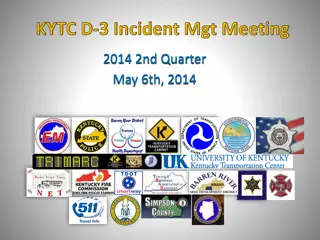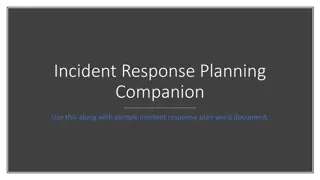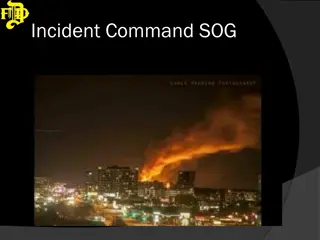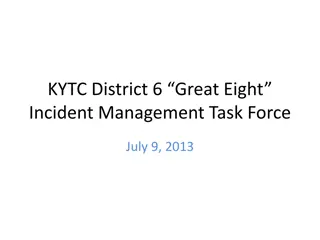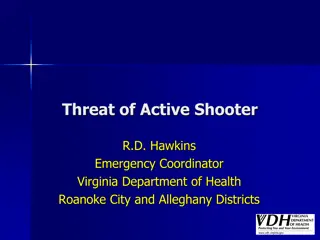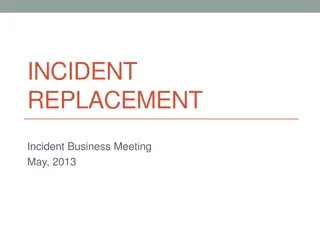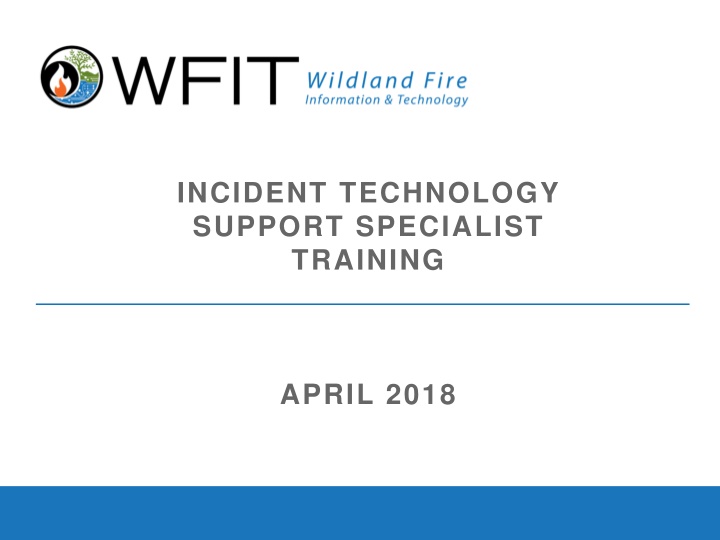
INCIDENT TECHNOLOGY SUPPORT SPECIALIST TRAINING APRIL 2018
This document outlines the Incident Technology Support Specialist Training held in April 2018. It covers various topics such as ITSS responsibilities, basic wildfire orientation, equipment usage, network setup, e-ISuite configuration, and more. The training included introductions, cadre members, participant backgrounds, classroom guidelines, and life lessons. The course focused on practical skills and knowledge sharing to support incident response efforts effectively.
Download Presentation

Please find below an Image/Link to download the presentation.
The content on the website is provided AS IS for your information and personal use only. It may not be sold, licensed, or shared on other websites without obtaining consent from the author. If you encounter any issues during the download, it is possible that the publisher has removed the file from their server.
You are allowed to download the files provided on this website for personal or commercial use, subject to the condition that they are used lawfully. All files are the property of their respective owners.
The content on the website is provided AS IS for your information and personal use only. It may not be sold, licensed, or shared on other websites without obtaining consent from the author.
E N D
Presentation Transcript
INCIDENT TECHNOLOGY SUPPORT SPECIALIST TRAINING APRIL 2018
Welcome Erik Torres, NPS NIFC, ITSW Chair 2
Course Outline Introductions and housekeeping What does an ITSS do? S-110 Basic Wildfire Orientation Make and test an Ethernet cable Equipment used on incidents Transfer of property Network layout and setup Wireless Devices 3
Course Outline e-ISuite Configuration, Administration and Functions Physical and Logical Security InciWeb and Team Websites Incident Simulation Internet Access do s and don ts FireNet 4
Cadre Introduction Kevin Hoffman USFS EP FAM-IT Paul Dzialowy - AD Roseburg BLM Donna Tate USFS, e-ISuite PM Mike Gascon BLM CM Specialist James Whiteside - USFS Heather Wiskow BLM Jenifer Ward - NPS 5
Participant Introductions Where are you from? What is your day job? Any incident experience? Do you have your FTP and NAP Accounts? Have you requested a FireNet account? Are you on the FireNet ITSS Email List? Are you on the e-ISuite Email List? 6
L C E S Local support personnel (Lookouts) Anything with an ON switch set to SILENT (Communication) Fire Exits (Escape Routes) Restrooms (Safety Zones) Class Hours Breaks 7
ITSS Class Life Lessons SHARE EVERYTHING Especially Knowledge to Help Your Fellow Participant Be Successful In This Class. PLAY FAIR Let everyone have a turn, don t dominate your team. DON T HIT or HIT ON PEOPLE Treat Them With Respect Play Nice & Treat Others The Way You Want To Be Treated. PUT THINGS BACK WHERE YOU FIND THEM Especially Tools You Borrow From The Instructors. CLEAN UP YOUR OWN MESS We Are Guests of This Facility. Don't take things that aren't yours There Will Be Enough Trinkets For Everyone. Say you're sorry when you hurt somebody We All Make mistakes From ALL I REALLY NEED TO KNOW I LEARNED IN KINDERGARTEN" by Robert Fulghum 8
ITSS Class Life Lessons Wash your hands before you eat Especially At Lunch Time. BREAKS We Will Take Breaks As Needed Live a balanced life - Learn some and think some and draw and paint and sing and dance and play and work every day some This class will be fun and interactive. Keep the sand in the box stay focused on the class & materials being presented do not try to read your email during the class. Please hold off on questions until the end of a session, you may get the answer during the lecture. From ALL I REALLY NEED TO KNOW I LEARNED IN KINDERGARTEN" by Robert Fulghum 9
SAFETY FIRST Safety is ALWAYS our top priority You re going to be tired and may have the camp crud Take the time to think Especially when driving https://www.nwcg.gov/committees/6-Minutes-for-safety 11
Wildland Fire Fatalities The four major causes of death heart attacks (41 fatalities, 24 percent), vehicle accidents (34 fatalities, 20 percent), aircraft accidents (31 fatalities, 18 percent), and entrapments (28 fatalities, 17 percent) were responsible for 79 percent of the total number of fatalities. Source : https://www.nwcg.gov/sites/default/files/publications/pms841.pdf 12
Wildland Fire Fatalities Every year no matter how hard we try, people get hurt or perish Year Fatalities WATCH FOR THE HAZARDS 2011 11 2012 15 2013 34 FATIGUE & DRIVING 2014 10 2015 13 2016 15 https://www.nifc.gov/safety/safety_documents/Fatalities-by-Year.pdf 13
An ITSS has the skills to: Support incident information systems and the professionals that use them Brief managers on IT issues Design, build and support a wired and wireless network Manage hardware and software issues Identify problems, plan and implement corrective action Provide professional and timely user support 14
An ITSS has the skills to: Maintain the network as it expands and contracts Deal with the worst possible Environmental conditions (hot/cold/wet/dry/dusty/bad power) Administer the e-ISuite system Manage data and backups Creatively resolve issues that arise 15
An ITSS has the skills to: Work with hair on fire Support technology that appears on an incident Support the heavy hitters including PIOs, FBANs and IMETs, GIS Specialists Teach and Mentor Stay focused on the mission 16
An ITSS has the skills to: Complete Transition documents Coordinate with other teams Coordinate within your team Move a network quickly to another camp location Close out an incident 17
Support Your Team Help incident personnel get their job done. Don t get caught in the trap of being a do-er just because you know and understand the technology. Those who can, do. Those who understand, teach. 18
Dont build dumb fireline -- Joe Stutler, ICT1 19


